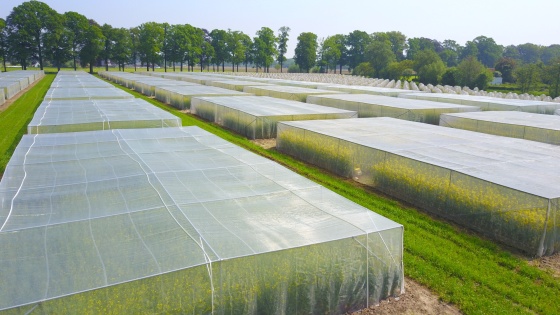Why grow hybrid?
Increased vigour
Hybrid seed development creates varieties which are more vigorous and resilient to agronomic and environmental pressures throughout the season. This means that growers are more likely to achieve a viable crop if conditions are challenging Greater vigour contributes to a hybrid’s green area index, which in turn has a significant effect on yield potential and seed number.

Faster crop improvement
Hybrid breeding speeds up the rate of progress we can make in crop improvement. In hybrid breeding genetically diverse parents are crossed to produce stronger offspring – a process called heterosis. Heterosis is responsible for the increased yields, uniformity and vigorous nature of hybrids. These stronger offspring can be progressively improved by repeating the heterosis process again and again, to produce robust OSR varieties.
Specialist traits and characteristics
Hybrid breeding allows faster development of innovative trait technologies to provide a range of solutions such as herbicide tolerance, specialist oils, improved disease resistance and protection against pod shatter. The range and speed with which improved traits can be rapidly and reliably combined into hybrids is simply impossible with conventional breeding methods. Stacking all the genes into one line can be slow, and for many genes it is much easier to put some in each hybrid parent and then bring them together. But a hybrid’s ability to deliver depends on identifying the most valuable traits in the first place, fixing them in parent stock and combining the characteristics of both parents into high output hybrids with consistent strength and agronomic depth to get the greatest possible advantage.
Wider sowing window
Vigorous varieties give the flexibility to sow later, which may help avoid pest problems and support better grass weed control
Lower sowing rates
Hybrids require a much lower sowing density than open-pollinated/conventional varieties to establish a viable population. To maximise yield it is important to establish the correct number of plants, to create the optimum sized canopy at flowering. Crops with excessively large canopies, either from drilling too early or too high a seed rate, will not fulfil their yield potential and will be at high risk of lodging. InVigor hybrids require a much lower sowing density than conventional varieties to establish a comparable plant population, as they have a better ability to compensate for lower plant densities. The economic optimum seed rate for InVigor OSR hybrids is between 30 and 50 seeds/m2, with the aim of establishing a population of 25-40 plants/m2.
Certified seed
Most oilseed rape hybrids grown in the UK are classified as ‘double-low’ or '00’. Such varieties have been bred for an extremely low erucic acid and glucosinolate content, falling well below the legal food standards and helping produce the highest quality oil and meal.
